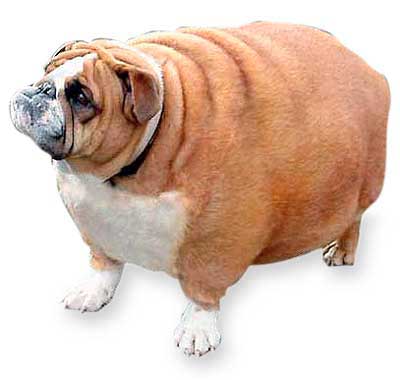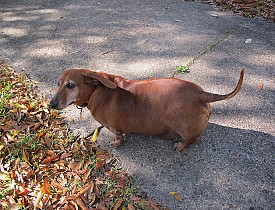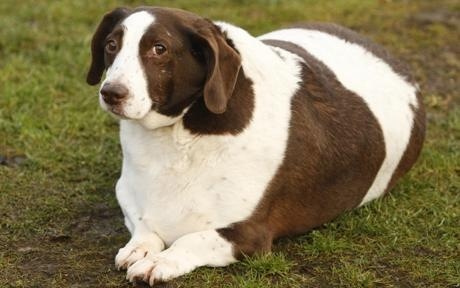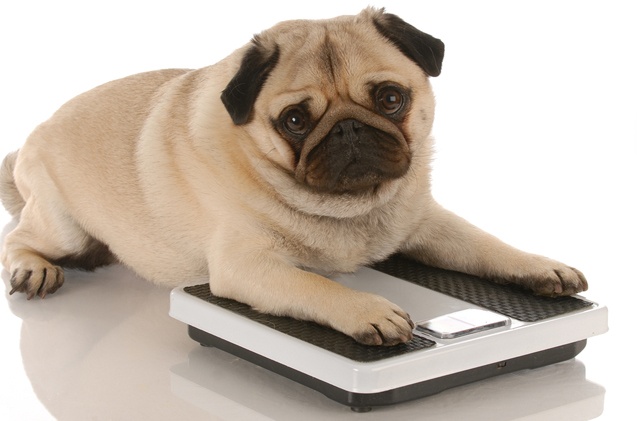The goal of any weight reduction program is to decrease the caloric intake (i.e. less food) and increase energy expenditure (i.e. more exercise). The first step in a successful weight reduction program is to have your pet examined by a veterinarian. The reasons for this are two-fold: (1) to make sure there is no underlying medical reason for the obesity, and (2) to make sure your pet can safely be put on a diet.
Treatments
Once a veterinarian has examined your pet, it should be weighed and a goal should be set for how much weight is to be lost within a specific period of time. Ideally, your pet should be placed on a reducing diet (available from your veterinarian). These diets are balanced rations that have all the necessary nutrients your pet needs, but less calories than full rations. Commercially available "light" or calorie-reduced diets are good for maintaining weight loss or preventing obesity, but are not recommended for a weight-reduction program. There are many natural home-made food diets also available and can cost less than high end dog food.
Three to four small feedings a day actually results in more energy loss (i.e. calories burned) than one or two large feedings. You should feed your pet the required daily ration of food but divide it into three to four small feedings. At the same time, keep your pet out of the kitchen or dining room when meals are being prepared or eaten, since these tend to be the times that begging occurs and snacks are more likely to be fed to pets. Snacks and treats are probably the single most likely cause of obesity in pets and they account for the failure of most weight reduction programs. All snacks and treats including milk bones and table scraps/treats, should be discontinued for the dieting pet.
In addition to following your dog's diet, be sure to take your dog for a brisk walk at least twice daily for 15 to 20 minutes. During the weight reduction program, you should monitor your dog's weight regularly. This involves weighing your pet on a weekly basis and then charting the weight loss on a graph. Weighing should be done at the same time of the day, preferably before feeding.
Once the ideal weight has been reached and to make sure your pet does not regain the lost weight, be sure to avoid in-between meals snacks, make sure your pet gets enough exercise daily, continue to chart your dogs weight on a graph and feed a restricted-calorie diet.
Below are a few suggestions for dog food to maintain a good dog weight. We have used these for Lucy since she was a pup and found that she has keep a good weight and coat using these. Click on the dog food or treat to get more information about them.








